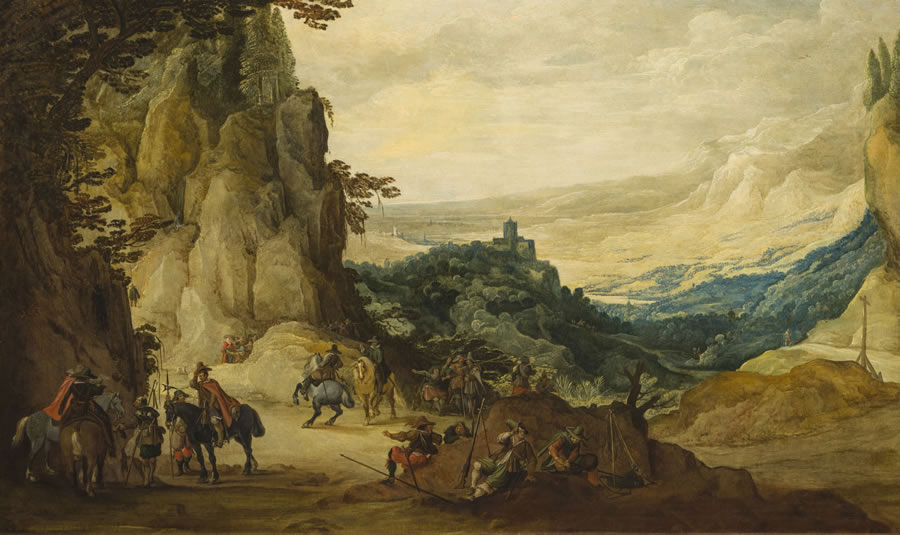The distinction of pictorial genres was codified in the Seventeenth century. The renowned Discourse on Painting by Vincenzo Giustiniani, written in the form of a letter addressed to the Dutch lawyer Theodor Amaydenma, offers a hierarchical classification of the art of painting divided into twelve techniques, according to an increasing order of importance, quality and technical commitment. In seventh position, the author places the landscape that he defines as the “Ability to portray a great thing, like a façade, antiques or a country, near or far”, distinguishing with acumen between the Italian technique, “which is not meant to be meticulous” and the Flemish one, “which aims at patiently rendering the details of the elements it portrays”. According to Giustiniani, the main representatives of the Italian technique are Titian, Raphael, Carracci and Guido Reni, while the representatives of the Flemish school are Herri met de Bles, known as the Civetta (the Owl), Bruegel and Paul Brill, omitting or perhaps not fully grasping the Flemish primacy in codifying landscape art as an autonomous genre already in the Sixteenth century, going beyond literary classicism and focusing on the more realistic yet imaginary aspects of nature. Starting from the most ancient examples presented here, one of the most interesting masters of the transition was undoubtedly Joost De Momper (Antwerp, 1564 – 1635), who brought about the evolution of landscape that led to a realistic representation of nature. Yet, in his “romantic” mood and motivations, he is inspired by an imaginary vision. He thus depicts mountain sceneries which are real yet transfigured in terms of structure and colours. Such landscapes are similar to the ones painted by his fellow Paul Bril (Antwerp, 1554-Rome, 1626). Initially inspired by Pieter Bruegel, Momper seems to know the Venetian palette of Tintoretto’s later production. His mountain landscapes, besides inspiring the idea of a trip to Italy in 1580, show reality combined with an emotional vision, recognisable in his painting technique, able to evoke at best the atmosphere and the prospective distances. Another specialist in landscape art, Joost Cornelisz Droochsloot (Utrecht 1586–1666) is the author of Paesaggio con villaggio di campagna e figure, (Landscape with country village and subjects) as both the signature J. C D….SLOOT and the date in the lower left corner suggest. In 1616, Droochsloot is registered in the Guild of St Luke of his home town. His production includes mainly landscapes and country villages, painted according to diagonal points of view and wise prospective techniques. The artist carefully tells about the rural life of the time. In so doing, he was inspired by Pieter Brueghel’s and David Vinckboons’s tradition. Going back to Antwerp school, we would like to recall two works by Antoine Mirou (Antwerp, around 1570 – after 1661) and Joseph Van Bredael (Antwerp, 1688 – Paris, 1739), that show the genre at the time of Baroque and Rocaille, still strongly influenced by the tradition of Jan Brueghel and Matthieu Schoevaerdts.
1555 Views |
Like







